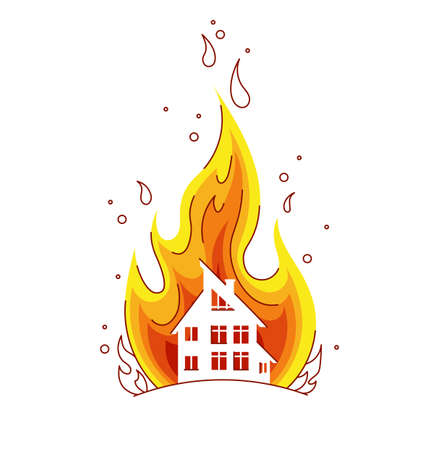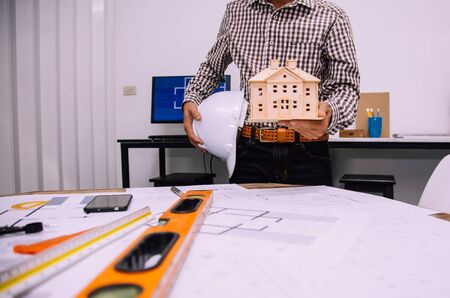Understanding UK Building Regulations for Loft Conversions
Before you embark on your loft conversion project, it’s crucial to understand the key building regulations in the UK, especially those focused on fire safety and legal compliance. The UK government has strict guidelines to ensure that any new habitable space is safe, accessible, and compliant with national standards. These regulations are primarily enforced by your local authority’s Building Control team, who will inspect your project at various stages.
Main Regulations to Consider
When converting a loft, specific regulations come into play regarding structural stability, insulation, ventilation, access, and—most importantly—fire safety. Compliance isn’t just about ticking boxes; it’s about ensuring the well-being of everyone in your home. Here’s a quick overview:
| Regulation Area | Description | UK Standard/Part |
|---|---|---|
| Fire Safety | Safe escape routes, fire doors, smoke alarms, fire-resistant materials | Approved Document B |
| Access & Egress | Staircase requirements for emergency exit | Approved Document K & M |
| Structural Integrity | Load-bearing walls, joists, and roof structure reinforcement | Approved Document A |
| Insulation & Ventilation | Thermal efficiency and air flow to prevent damp and condensation | Approved Document L & F |
| Sound Insulation | Reducing noise between rooms and adjoining properties | Approved Document E |
Why Fire Safety Takes Priority in Loft Conversions?
A major concern with loft conversions is that they introduce a new storey above existing living space. This change increases the risk during emergencies if fire safety isn’t properly addressed. That’s why regulations require features such as interconnected smoke alarms on every floor, fire-resistant doors leading to stairways, and protected escape routes right down to the final exit door.
Your Legal Obligations as a Homeowner or DIYer
If you’re planning a DIY loft conversion to save on costs, remember: even budget-friendly projects must comply with these regulations. Failing to do so can result in hefty fines or having to undo completed work. Always submit plans for approval before starting construction—and consult professionals where needed to avoid costly mistakes further down the line.
2. Fire Safety Requirements in Loft Conversions
Ensuring fire safety is a top priority when undertaking a loft conversion in the UK. British Building Regulations set out specific fire protection requirements designed to safeguard residents and provide safe escape routes in case of emergency. Here’s a detailed look at the essential fire safety measures you need to implement for your loft conversion project, with practical advice on staying compliant without overspending.
Fire Doors: Upgrading for Safety
One of the primary regulations is the installation of fire doors. Any doors leading from habitable rooms onto the stairway (including those on lower floors) must be upgraded to FD30-rated fire doors, which offer 30 minutes of fire resistance. This helps to compartmentalise any potential fire, giving occupants crucial time to evacuate safely. For a budget-friendly approach, consider fitting intumescent strips and upgrading existing solid-core doors rather than replacing every door completely.
Smoke Alarms and Detection Systems
The law requires interlinked smoke alarms to be installed on every floor, including the loft space itself. These alarms must be mains-powered with a battery backup, ensuring functionality even during power cuts. Heat alarms are also recommended in kitchens or areas close to the new staircase.
| Location | Type of Alarm Required |
|---|---|
| Loft/Converted Room | Smoke Alarm (Interlinked) |
| Main Stairwell | Smoke Alarm (Interlinked) |
| Kitchen | Heat Alarm (Interlinked) |
Protected Escape Routes
A protected escape route, typically via the main staircase enclosed by fire-resistant walls and doors, is compulsory for all loft conversions above ground level. The entire stair enclosure should have at least 30 minutes’ fire resistance from every habitable room it serves. Avoid open-plan layouts that compromise this protected path; instead, use cost-effective partition walls and ensure all glazing along the route is fitted with fire-rated glass if necessary.
Additional Best Practices
- Keep corridors and staircases clear of clutter for unobstructed evacuation.
- If adding a new staircase is unavoidable, position it close to an external wall for easier escape window installation.
- All new windows used as secondary escape routes should have an opening area of at least 0.33m² and be no more than 1.1m above the floor.
Summary Table: Key Fire Safety Features
| Feature | Minimum Requirement |
|---|---|
| Fire Doors | FD30 rating on all levels leading to stairwell |
| Smoke Alarms | Mains-powered, interlinked on each floor |
| Escape Windows | >0.33m² opening, max 1.1m from floor |
Meeting these UK-specific fire safety standards not only keeps your family safe but also ensures your loft conversion passes building control inspections without unnecessary expense.

3. Ensuring Safe and Practical Access
When planning a loft conversion in the UK, one of the most important aspects to consider is providing safe and practical access. According to UK Building Regulations, particularly Part K and Part B (Fire Safety), your access route—usually stairs—must be carefully designed to ensure both safety and compliance without blowing your budget.
First, the staircase should provide a direct, unobstructed path from the loft to a final exit. Spiral staircases may look stylish and save space, but they are generally only allowed in single-occupancy rooms and not for main bedrooms. The minimum headroom above the stairs must be 2 metres at all points, although a reduced height of 1.9 metres is sometimes permitted over landings or where space is tight.
The position of the new stairs is crucial; ideally, they should continue from your existing staircase, providing a natural flow for escape in an emergency. Avoid placing them in kitchens or garages if possible, as this can increase fire risks. For homes with limited space, alternating tread stairs might be considered for small lofts used as a single room, but these come with strict guidelines.
Below is a summary table comparing common stair types for loft conversions:
| Stair Type | Space Needed | Building Regs Compliance | Suitability |
|---|---|---|---|
| Standard Straight Staircase | High | Fully compliant | Main bedrooms & general use |
| Winder Staircase | Moderate | Compliant with correct angles & handrails | Where space is limited but regular use needed |
| Spiral Staircase | Low | Limited use (single room) | Occasional use/guest rooms |
| Alternating Tread Stairs | Very low | Strict limits (single room only) | Tiny spaces/occasional use |
DIY tip: If you’re working to a tight budget, prefabricated stair kits can be more affordable than bespoke joinery—just make sure they meet British Standards (BS 5395). Finally, always install sturdy handrails on both sides of the staircase for extra safety and check that steps are even and non-slip. By prioritising safe design and proper placement, you’ll keep your family secure while keeping costs sensible.
4. DIY Fire Safety Upgrades on a Budget
Enhancing fire safety in your UK loft conversion doesn’t have to mean expensive contractors or high-end materials. There are plenty of cost-effective, do-it-yourself solutions that comply with local regulations and help keep your home safe. Here are some practical tips and ideas for budget-friendly fire safety improvements:
Install Interlinked Smoke Alarms
Current UK Building Regulations require interlinked smoke alarms on every storey, including the loft. Opt for battery-powered, wireless alarms which are easy to install and don’t require rewiring. Place one in the loft room, stairwell, and main landing for maximum coverage.
Add Intumescent Strips to Doors
Upgrading doors to 30-minute fire doors can be costly, but you can increase their resistance by fitting intumescent strips around the edges. These strips expand in heat, sealing gaps to slow the spread of fire. Many DIY stores offer adhesive-backed options suitable for most standard doors.
Maintain a Clear Escape Route
A cluttered staircase or landing can be a major hazard during an emergency. Make it a regular habit to keep escape routes clear of obstacles like shoes, boxes, or laundry baskets—this costs nothing but could make all the difference.
Upgrade Lighting for Better Visibility
In low-light situations, clear visibility is crucial for safe evacuation. Consider installing battery-operated LED emergency lights along stairwells and landings. These are inexpensive and simple to fit using self-adhesive pads or screws.
Quick Reference Table: DIY Fire Safety Upgrades
| Upgrade | Estimated Cost | DIY Difficulty |
|---|---|---|
| Wireless Smoke Alarms (per unit) | £15-25 | Easy |
| Intumescent Door Strips (per door) | £10-20 | Easy/Medium |
| Battery Emergency Lights (per unit) | £8-12 | Easy |
Tip: Shop Smart!
You can often find these products at local DIY shops, online retailers like Screwfix or B&Q, or even community reuse centres for a fraction of the price. Always check products meet British Standards (BS 5839 for alarms).
5. Common Mistakes and How to Avoid Them
When tackling a loft conversion in the UK, fire safety and access are areas where DIYers and even some professionals can trip up. Here’s a breakdown of frequent missteps and budget-friendly ways to avoid them, ensuring your project meets both regulations and best practices.
Overlooking Fire Door Requirements
Many homeowners forget that all habitable rooms leading off the new escape route must have FD30-rated fire doors. Swapping out old doors for certified fire doors doesn’t need to break the bank—look for second-hand options or unfinished models you can paint yourself.
Incorrect Escape Window Specifications
A common mistake is installing windows that don’t meet minimum size or opening criteria for emergency escapes. The table below sums up what you need to remember:
| Requirement | Regulation |
|---|---|
| Clear Opening Area | At least 0.33m², minimum 450mm height & width |
| Window Sill Height | No more than 1,100mm from floor level |
Always double-check manufacturer specs before ordering, and consider DIY installation if you’re confident—just ensure it’s watertight!
Poorly Planned Escape Routes
Some conversions compromise on protected corridors or allow clutter to block escape paths. Make sure your landing and stairwell are kept clear, use affordable smoke seals on doors, and fit battery-powered smoke alarms as a back-up if hardwiring isn’t feasible right away.
DIY Staircase Errors
Cutting corners with staircase design can lead to steep or non-compliant stairs. Use these key measurements as your guide:
| Staircase Element | UK Minimum Standard |
|---|---|
| Tread Depth | 220mm |
| Riser Height | Max 220mm |
If a bespoke staircase is out of budget, look for pre-made kit stairs that meet Building Regulations—many UK suppliers offer economical solutions.
Lack of Professional Sign-off
Finally, even if you DIY most of the build, never skip building control approval. Engage your local authority early: they can point out issues before they become expensive fixes and sign off your project without unnecessary delays.
6. When to Seek Professional Help
While a DIY approach can help you save money and offer a sense of accomplishment, it’s crucial to recognise when your loft conversion project—especially concerning fire safety and access—demands professional expertise. In the UK, strict building regulations exist to ensure the safety of all occupants, and falling short of these requirements can have serious legal and personal consequences. Here’s how you can determine if your project is beyond a typical DIY scope:
Key Indicators That You Need a Professional
| Situation | Why You Need a Pro |
|---|---|
| Structural Alterations (e.g., removing rafters or joists) | Only certified structural engineers can calculate safe load-bearing capacities and prevent collapse. |
| Installing Fire Doors or Escape Windows | Precise installation and certification are required for compliance with British fire regulations. |
| Electrical Wiring for Smoke Alarms | UK law mandates that electrical work be carried out or certified by a registered electrician. |
| Designing Escape Routes | Building control officers or architects ensure that escape routes meet current Building Regulations Part B. |
The Importance of Consulting British Professionals
Consulting professionals such as RICS-accredited surveyors, architects familiar with UK codes, or local authority building control officers ensures your loft conversion meets every legal requirement. Their knowledge of British standards guarantees your work will pass inspections, maintain insurance validity, and—most importantly—keep your family safe.
Your Safety Net: When in Doubt, Ask!
If you’re ever unsure about the legality or safety of an aspect of your loft conversion, seeking advice from a qualified UK professional is not just recommended—it’s essential. They can identify potential hazards you might overlook and help you avoid costly mistakes or fines down the line. Remember: saving money shouldn’t come at the expense of safety or compliance.


